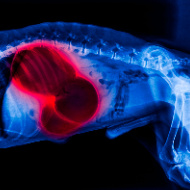Hen harrier numbers fall by quarter in Northern Ireland
The number of pairs in Northern Ireland has dropped from 46 to 34.
The number of hen harriers in Northern Ireland has fallen by a quarter in recent years, despite an overall increase in the UK.
The 2023 UK Hen Harrier Survey revealed that the population of the bird of prey has declined by more than 26 per cent in Northern Ireland since 2016, with the number of pairs dropping from 46 to 34.
In contrast, the population increased by 20 per cent across the UK as a whole during the same period.
In response to the decline in Northern Ireland, a working group has been formed to consider measures which could be introduced to help the species, which is listed as one of principle importance for the purpose of biodiversity conservation.
There are currently two Special Protection Areas in Northern Ireland which are designed to protect the hen harrier during its breeding season. The survey revealed that the number of pairs within these areas remained relatively stable, despite the fall in numbers elsewhere.
The survey was organised by the RSPB at national level and locally by the Northern Ireland Raptor Study Group (NIRSG). It was part-funded by Northern Ireland’s Department of Agriculture, Environment and Rural Affairs (DAERA).
DAERA minister Andrew Muir said: “My thanks go to all the voluntary fieldworkers and staff from NIRSG, RSPB, NIEA and other organisations, who took part in the survey so that we had excellent coverage of the hen harrier breeding range in Northern Ireland.”
A similar decline has been recorded in the Republic of Ireland, with the number of hen harriers in the country dropping by one third between 2015 and 2022. Conservation groups have highlighted loss of habitat as a significant reason for falling populations.
Minister Muir added: “Action needs to be taken to stop the decline of this iconic bird, but it can only be achieved through working in partnership with landowners, farmers, non-governmental organisations and all other stakeholders, to restore and enhance breeding habitats and appropriately manage activities which have the potential to cause disturbance and displacement.”
Image © Shutterstock



 The Kennel Club is inviting dog owners to attend a free webinar on gastric dilation-volvulus syndrome, also known as bloat.
The Kennel Club is inviting dog owners to attend a free webinar on gastric dilation-volvulus syndrome, also known as bloat.